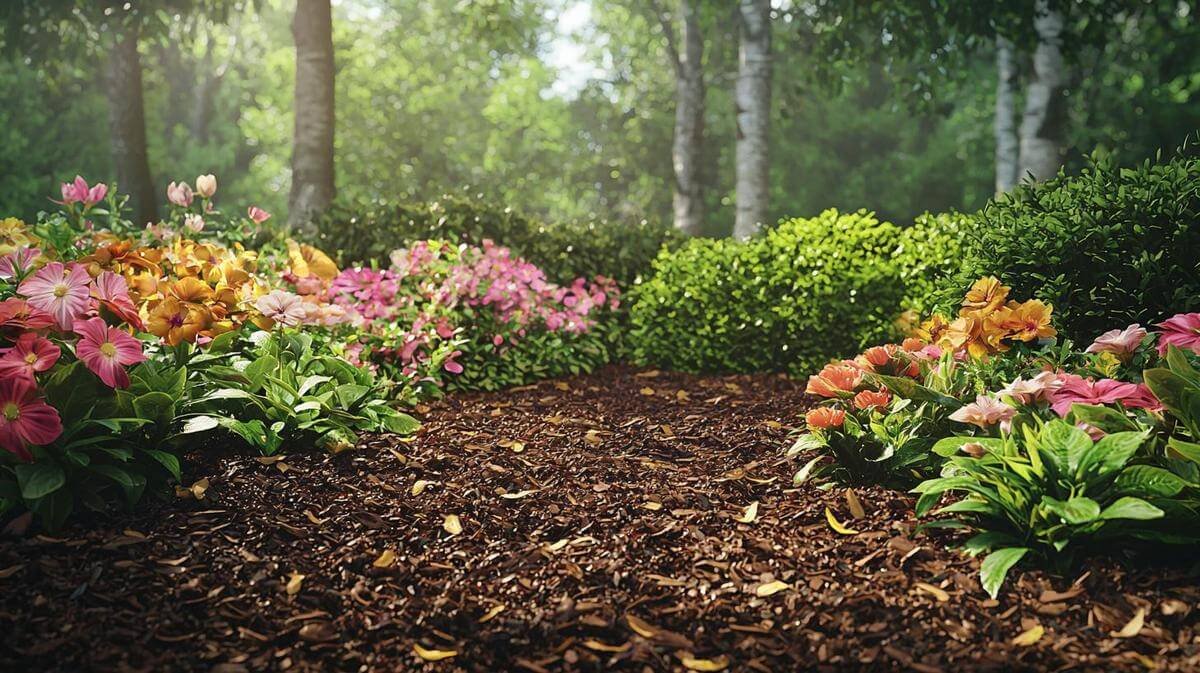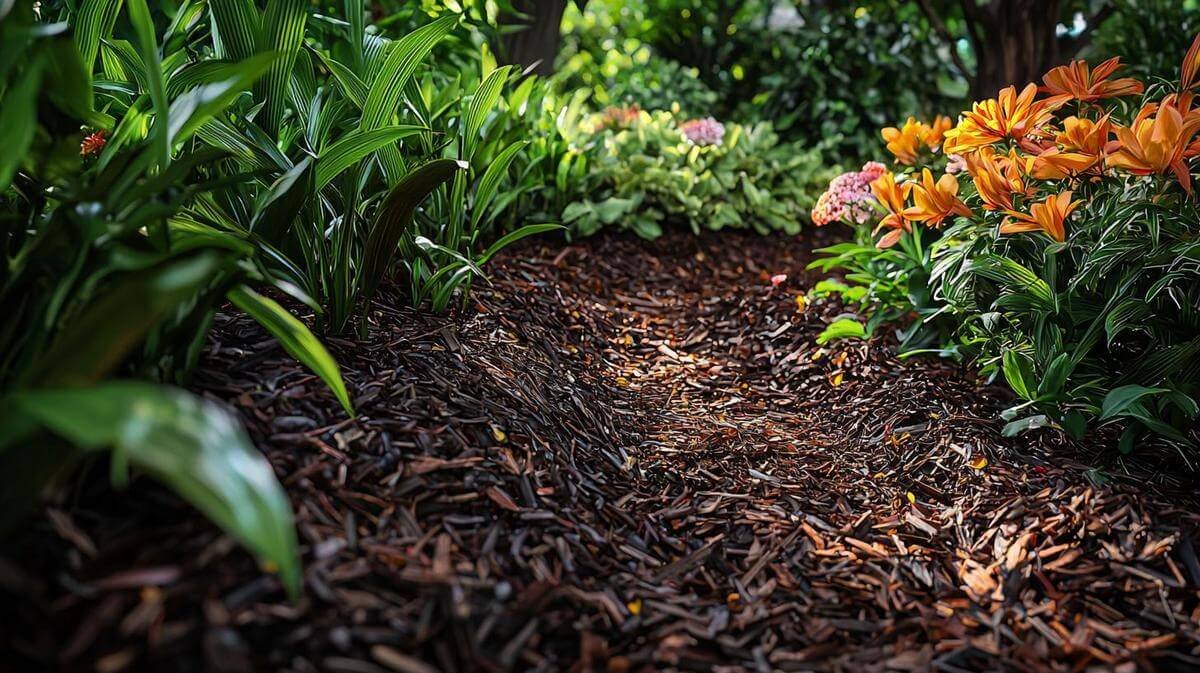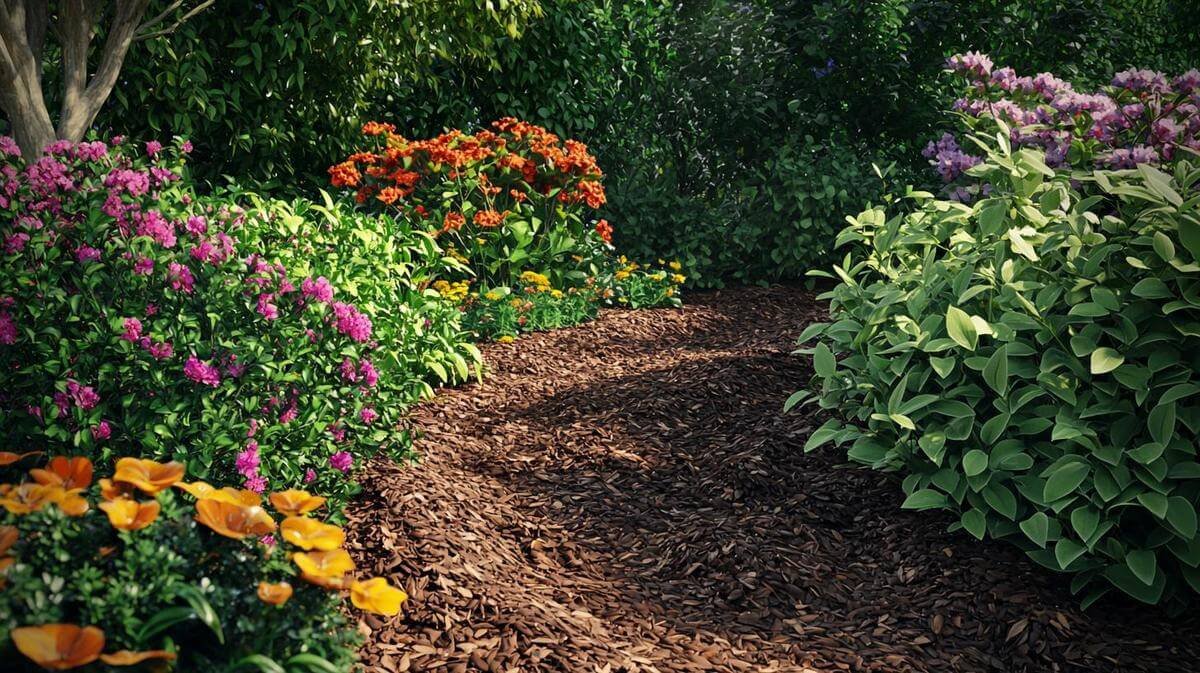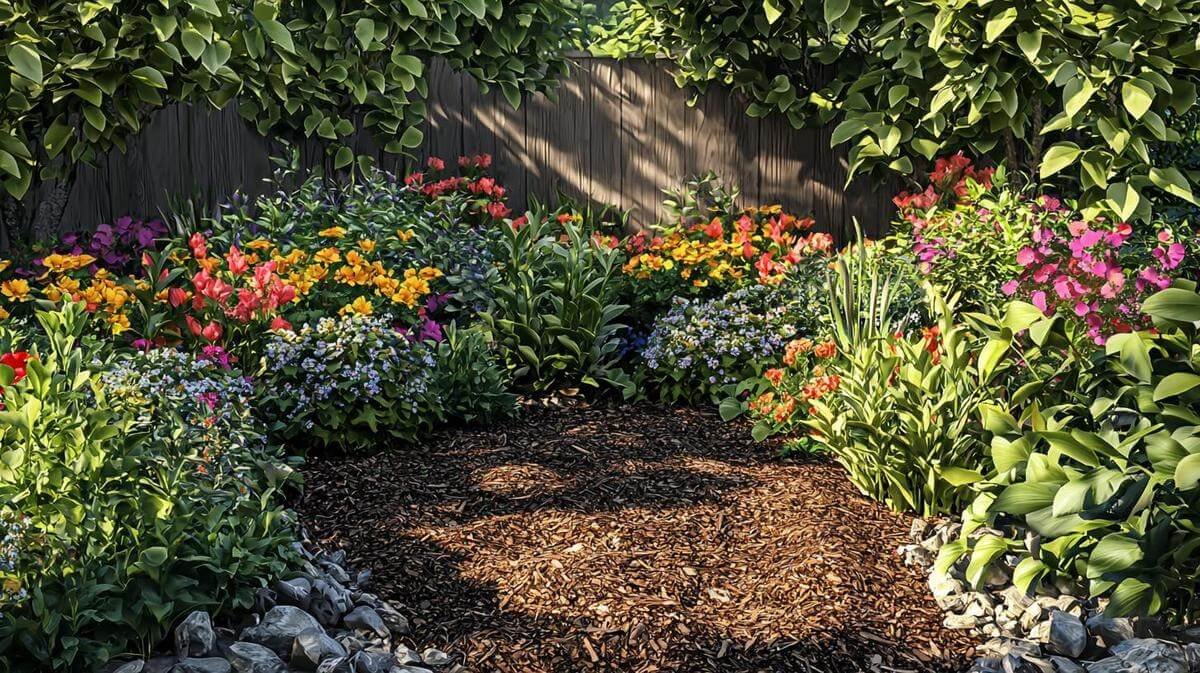- Definition: Mulching is placing material over or around plants to benefit soil and plants.
- Benefits: Retains soil moisture, reduces water evaporation, regulates soil temperature, controls weeds and pests, adds nutrients.
- Types of Mulch: Organic (e.g., compost, shredded leaves) and inorganic (e.g., stones, plastic sheets). Organic enriches soil; inorganic reduces weeds and requires less frequent replacement.
- Eco-Friendly Options: Biodegradable mulches like straw or newspaper are environmentally sustainable.
- Best Practices: Apply mulch in a 3-inch thick layer. Avoid touching plant stems. Adjust application based on seasons.
- Soil/Environmental Impact: Enhances soil quality, reduces erosion, conserves water, supports beneficial organisms. Choose organic mulches for a lower environmental impact.
Do you dream of the perfect lawn without the hassle of endless maintenance? Ever wonder what "mulched" really means in gardening? As a dedicated homeowner, discovering the secrets to a lush, green yard can elevate your curb appeal and even boost your property's value. Let's explore the true meaning of mulching and unlock its numerous benefits to create a thriving, eco-friendly landscape.
What is the Definition of Mulching?
Mulching means placing a layer of material on or around plants, like roses. This practice helps the garden soil in several ways. It can keep the soil moist, stop weeds from growing, and protect plants. In a broader sense, mulching involves using different materials to improve farming and forestry. The layers act as a protective cover.
In gardening and landscaping, mulching holds a valued spot because it greatly reduces water loss. By covering the ground, the mulch stops the sun from drying out the soil. This helps plants stay hydrated and healthier.
Some related terms include fertilization, soil conditioner, and agrochemical. Each is important for understanding mulching. Fertilization relates to adding nutrients to the soil to promote growth. A soil conditioner improves several soil qualities. Agrochemicals cover a range of chemicals used to enhance agriculture.
Historically, mulching has roots that go back many years. Ancient farmers might have used leaves or straw to cover crops and enrich the soil. This tradition continues today with modern techniques and materials. Understanding these fundamentals of mulching can help you see the meaning of mulched more clearly.

How Does Mulching Benefit Gardens and Landscapes?
Mulching can transform your garden in many ways. It keeps soil healthy, enriches it, and supports plant growth. Here’s a closer look at its benefits.
What are the Main Benefits of Mulching?
Firstly, mulching helps the soil retain moisture. It acts like a blanket, keeping water from evaporating. This means less watering is needed, saving you time and money. Mulch also regulates soil temperature. It keeps soil cooler in the hot summer and warmer in the cold winter.
Why is Mulching Important for Plant Health?
Plants thrive when mulched. The mulch breaks down over time, adding nutrients to the soil. Nutrient-rich soil means happier, healthier plants. Plus, mulching helps keep soil loose. Loose soil allows roots to grow deeper and stronger, supporting more robust plants.
How Does Mulching Aid in Pest and Weed Control?
Mulching naturally deters weeds by blocking sunlight from reaching the soil. Fewer weeds mean less competition for water and nutrients for your plants. It can also keep some pests away. For detailed information on mulching, visit Britannica or Cambridge. Mulching maintains balance in your garden, benefiting plants and controlling pests and weeds.

What Are the Different Types of Mulch?
When it comes to gardening, mulch plays a vital role. But what types of mulch exist? Let me break this down for you.
What Kinds of Organic Mulch are Available?
Organic mulches come from natural sources like leaves, straw, and bark. These materials break down over time, adding nutrients to the soil. As a gardener, I love using compost. It enriches the soil with minerals. Another great option is shredded leaves. They are free and make use of yard waste. Organic mulches also help retain soil moisture and keep out weeds.
How do Inorganic Mulches Compare to Organic Ones?
Inorganic mulches are materials like stones, gravel, or plastic sheets. These do not break down and need less replacement. So, what do they offer? They are effective in keeping the soil warm and reducing weeds. But they don't add nutrients back into the soil like organic mulches do.
Are There Eco-Friendly Mulching Options?
Yes, absolutely! Eco-friendly mulches are a sensible choice for gardeners who care about the environment. Biodegradable mulches, such as straw or newspaper, decompose and enrich the soil. These options satisfy both nutrient needs and environmental standards. So, when you think about mulch, consider which type suits your garden and goals best.

What Techniques and Practices Are Best When Mulching?
Mulching is essential in keeping plants healthy and strong. To make the most of mulching, start with the right methods. First, apply mulch in a thick, even layer.
How thick should mulch be?
Precision: Around three inches is best. This thickness keeps moisture in and stops weeds from growing.
What are Some Common Mulching Mistakes to Avoid?
Avoid piling mulch against plant stems or tree trunks.
What happens if mulch touches the stem?
Precision: It can cause rot. This affects the health of the plant. Also, do not use too much mulch. Over-mulching stops water and air from reaching the roots.
Mulching methods can change with the seasons. In spring, use a light layer to warm the soil faster. In summer, thicker mulch keeps plants cool and saves water.
Can mulching vary by season?
Yes, for best results, adjust mulch based on weather conditions. This seasonal change optimizes plant growth and protection. Keep mulching simple and adjust as needed. Following these tips will help you achieve healthy plants with the right mulching practices.

How Can Mulching Impact Soil and Environmental Health?
How Does Mulching Enhance Soil Quality and Structure?
Mulching boosts soil quality by adding nutrients. It breaks down over time, enriching the soil. This process improves the soil's ability to hold water and reduces erosion. It also helps create a healthy ecosystem by supporting beneficial organisms like earthworms.
What Role Does Mulch Play in Water Conservation?
Mulch keeps water in the soil by reducing evaporation. It forms a protective layer that shields soil from sun and wind. This means plants need less frequent watering. Mulching can conserve water in gardens and help during droughts. Mulched areas can maintain moisture better, ensuring plant survival.
Are There Environmental Considerations for Mulch Usage?
Mulching impacts the environment in various ways. It can reduce the need for chemical fertilizers. Organic mulches, like leaves or wood chips, are more eco-friendly. However, not all mulches are equal. Some, like rubber or synthetic types, may not decompose and could harm the environment. Choosing the right mulch is essential for healthy soil and a healthy planet. For improving fertility and pest control, reliable sources like the Cambridge Dictionary provide useful guidance.
Conclusion
Mulching, at its core, enriches gardens and aids plant health. We've explored these techniques and their impact on soil and water conservation. Mulching can boost your lawn’s look and health, making maintenance easier and more eco-friendly. By choosing the right type and practicing proper techniques, you enhance your lawn’s beauty and productivity. Keep these strategies in mind to nurture a thriving, lush landscape that supports our environment. Your well-care lawn reflects not just an esthetic charm, but a commitment to sustainable beauty.
